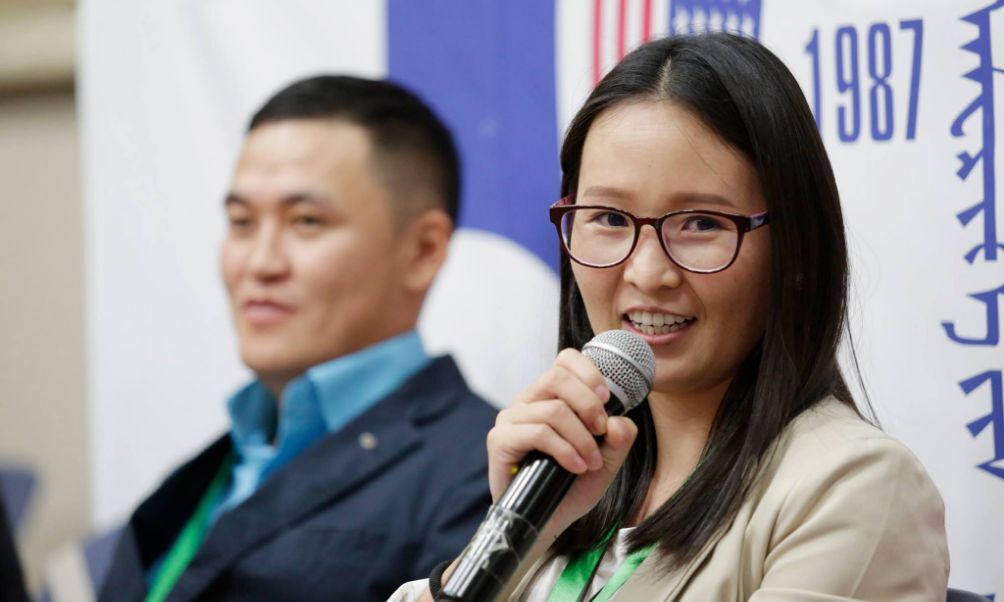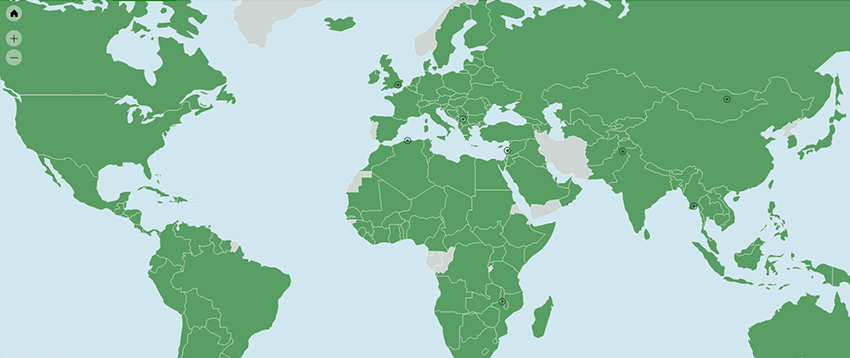-
What We Do
- WHERE WE WORK
-
About Us
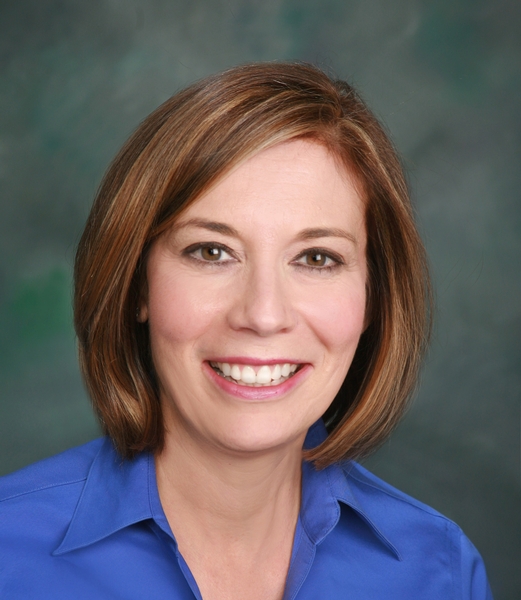 Welcome Message from Carol Jenkins
Welcome Message from Carol JenkinsFor more than 90 years, World Learning has equipped individuals and institutions to address the world’s most pressing problems. We believe that, working together with our partners, we can change this world for the better.
On my travels, I’ve had the opportunity to meet with many of those who have joined us in this mission. In Baghdad, we’ve trained more than 2,300 Iraqi youth who are already giving back at home. In London, our partners in the TAAP Initiative strongly believe that we are all responsible to practice inclusion. And in Vermont, our Experiment in International Living and School for International Training participants prove every day that they have the tools and the determination to change the world.
Please join us in our pursuit of a more peaceful and just world.
- Get Involved
Media Center > Story
Expert Voices: From medicine to STEM education, Mohamed Abdelaziz connects the dots
October 30, 2023
By Abby Henson
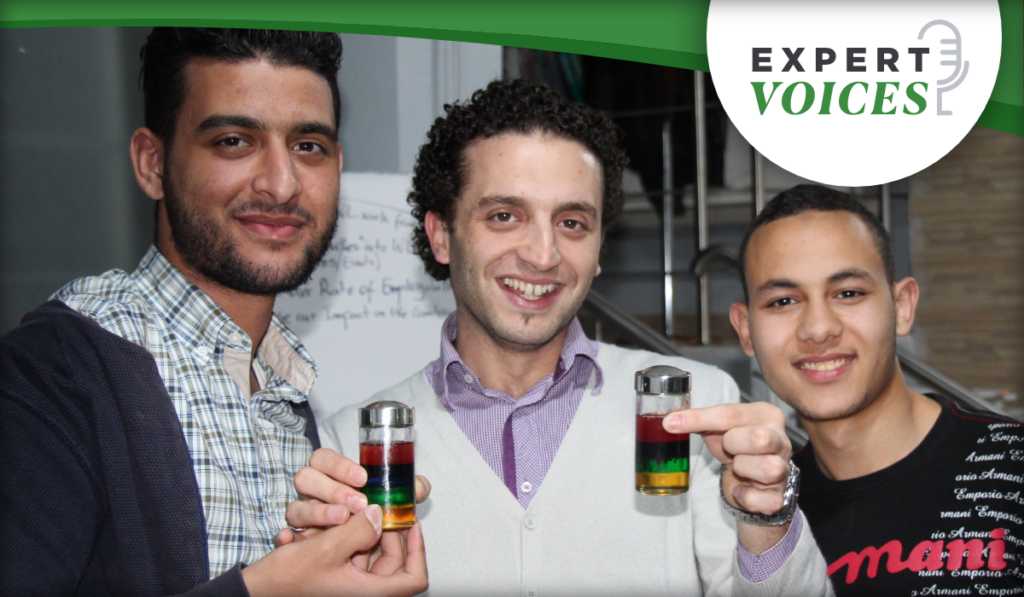
Mohamed Abdelaziz is World Learning’s STEAM center director for the STEAM Discovery Center project and general manager of World Learning’s global office in Saudi Arabia. He joined World Learning in 2012 and worked in the Algeria office until 2019 when he was tapped to serve as STEAM center director in Saudi Arabia.
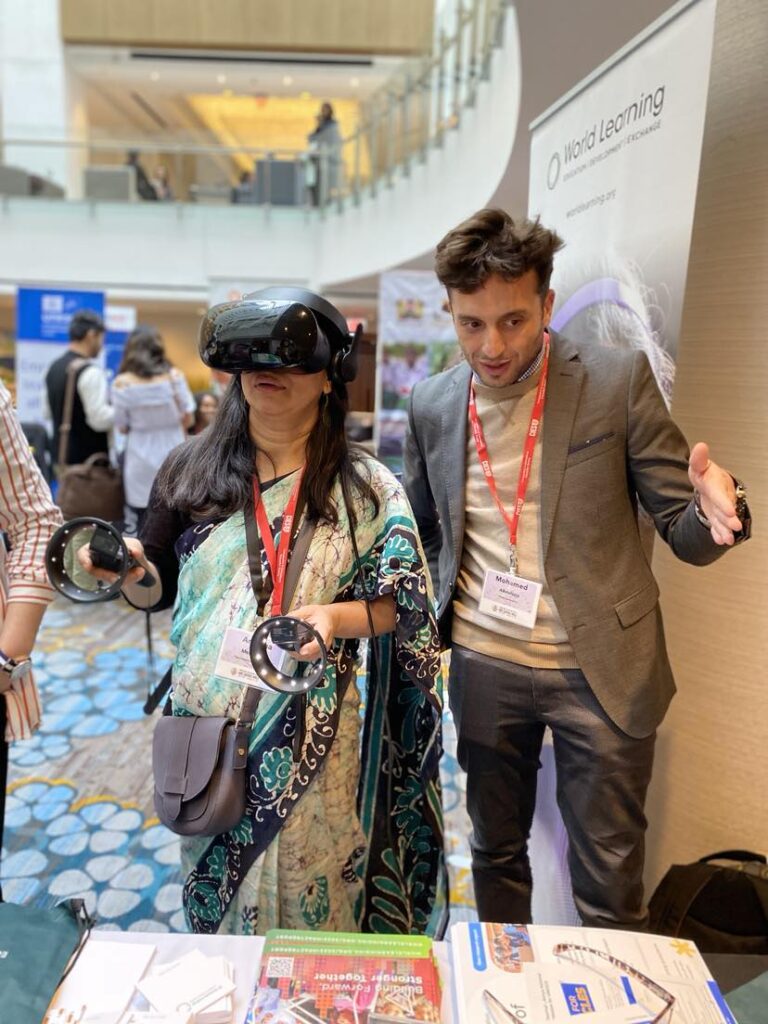
In the past decade, Mohamed has managed or contributed to a range of programs, the majority focused on STEM education, English language learning, career development, and civic engagement for youth. In 2017, he won World Learning’s Donald B. Watt Award for Innovation and Technology. The award honors individuals who have done the most to identify and implement new and innovative approaches to achieving World Learning’s goals, including through the incorporation of new technologies, social innovation, and entrepreneurship.
Mohamed spoke to us about his role leading World Learning’s global STEAM strategy, how his medical training inspired a career in STEM education, and his belief that STEM education best prepares youth for the global market in ways many don’t realize.
You have been with World Learning for more than 10 years, often focusing on programs that support youth. Has your background always been in youth development?
No, in 2003, I was studying to be a medical doctor. In Algeria then, we were able to have double majors. I ended up studying medicine, but also studying English literature and civilization. In 2011, I graduated with an MD and with a BA in English literature and civilization.
But while I was in university, I started teaching English at a private institution in Algiers called Hopeland that had you participate in teacher training. That was the beginning there. We were running teacher trainings every week and that helped me develop the teacher education skills that I needed because there was an opportunity for me to learn something in methodology and pedagogy and share it with the other teachers. We were encouraged to be initiative takers.
The STEM project especially pulls in my passion for cognitive and educational neuroscience.
That gave me the expertise to interview for a position as youth center project coordinator for World Learning in 2012.
My first project involved working closely with Lois [Scott-Conley, World Learning advisor for curriculum and training]. We co-designed a curriculum for at-risk youth that fostered the values of hope, tolerance, and community. We had to train the ministry teachers and World Learning volunteers on the curriculum. It was the first time I was introduced to the experiential learning model. That’s what led me to do World Learning’s SIT TESOL Certificate to be a licensed trainer.
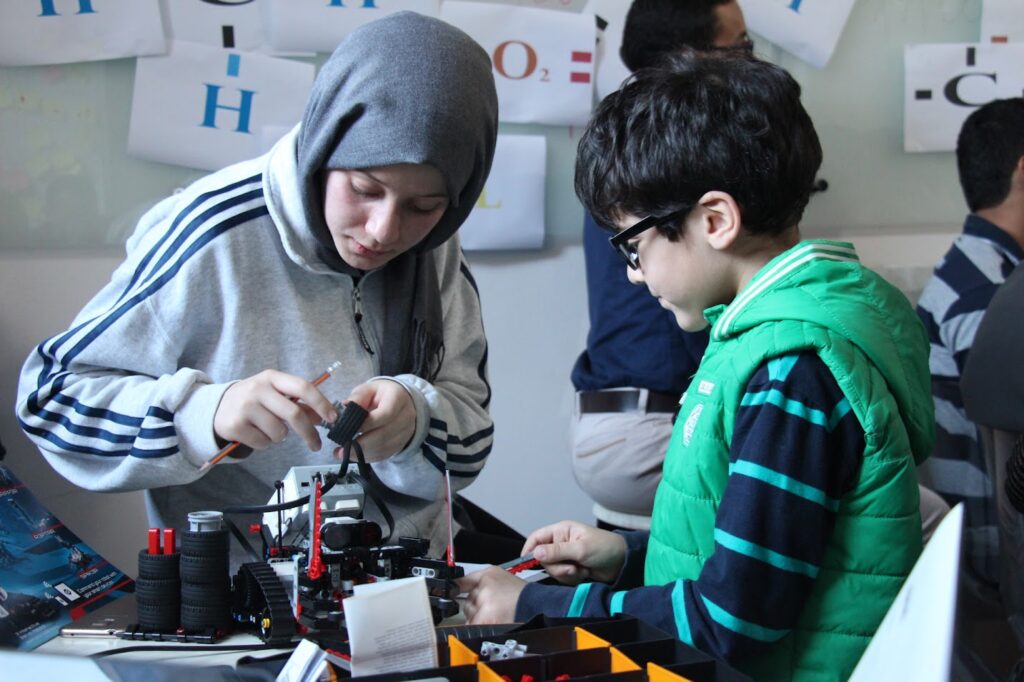
Of course, my next question is why did you leave medicine?
I might have left the practice of medicine, as in starting my own office as a general doctor or going into residency to become a specialist in ENT or cardiology. But I never left medicine.
When I focused on the education program classes, either teaching English or training teachers, I found my passion there. I was hoping to continue with medical school to teach some medical modules like physiology or physiopathology. That was really my interest. But in Algeria, I would need to spend seven more years studying a particular medical specialty and then three other years for a license to be able to teach. I preferred to spend those ten years in education and combine my science acumen with the methodology and pedagogy of learning and teaching STEM education. The STEM project especially pulls in my passion for cognitive and educational neuroscience.
The guiding principles we apply through our TESOL programming, including Universal Design for Learning, are neuroscience-based. The science behind UDL is how the brain’s networks work in order to engage students, how to present information that is accessible to all learners, how their brains work to maximize their own capacities. It also increases access and removes barriers to learning, which is the core goal of UDL as an inclusive education approach.
I love it when my teacher trainees ask me, “How does that happen?” Do you want me to go to the neuron level details or just the networks you know? It’s what motivates me and gives me energy. It’s what is behind my fascination with all that is technology-related also. Advancements in science and technology are what I am interested in. We brought that to the Algiers STEM Center: Space, aeronautics, biology, microscopes, telescopes.
Can you share more about the Algiers STEM Center and its work teaching STEM education?
The way STEM education is implemented can have a great or small impact — it depends on the way the program is run. In Algeria, youth would say, “Oh, a hackathon. Yeah, STEM. That is just for coders.” Or in Saudi Arabia, whenever we talk about STEM, people mention 3D printing and CNC laser cutting labs. That’s all. But what students are learning at World Learning’s STEM centers brings all the specialties together in an interdisciplinary passion-driven approach.
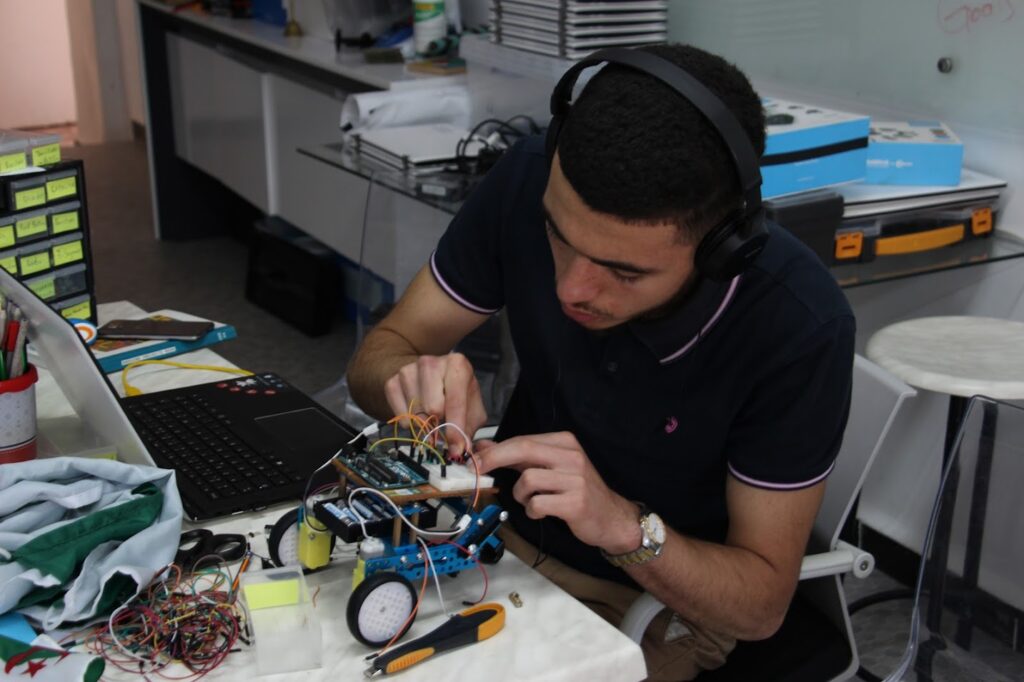
In the STEM center in Algeria, students try coding, electronic workshops, robotics, mechanical engineering, and science discovery. They also take psychometric tests if they need career orientation and guidance. They end up trying and testing a vast array of workshops that expose them to the world of STEM specialties. Then their eyes grow bright when they find their passion, and one day, a student is already there waiting for you to open the center door at 7:00 a.m.
Is the center mostly about free exploration, and the journey ends there? Or do the students work on specific projects afterward?
The center follows World Learning’s STEM education strategic framework where we scaffold the learning for students, vertically in each workshop and horizontally through all STEM programming. In the former, we start from guided practice to free practice and fluent use and innovation. The students feel more empowered by the end of a learning session or a course to then innovate with a project. At the horizontal level of STEM programming, they discover different specialties, explore one or more further, and then innovate through projects they’re passionate about. This learning pathway is successful because teachers have been trained and empowered to apply UDL principles in an active learning approach with the learner at the center of it all. High-quality teacher education programming is crucial to make it all work.
What students are learning at World Learning’s STEM centers brings all the specialties together in an interdisciplinary passion-driven approach.
Feeling safe and engaged, the students try different workshops to learn basic skills that they can use in the future for bigger projects. Ultimately, the students think collaboratively about a problem they see in their immediate community or even on the global landscape. It’s not just an imaginary project. It’s something that they vote on and connect with. One was a curve in the road in their neighborhood that caused a large number of accidents. Another one was related to trash on the beach, a big problem on the Algerian coastline.
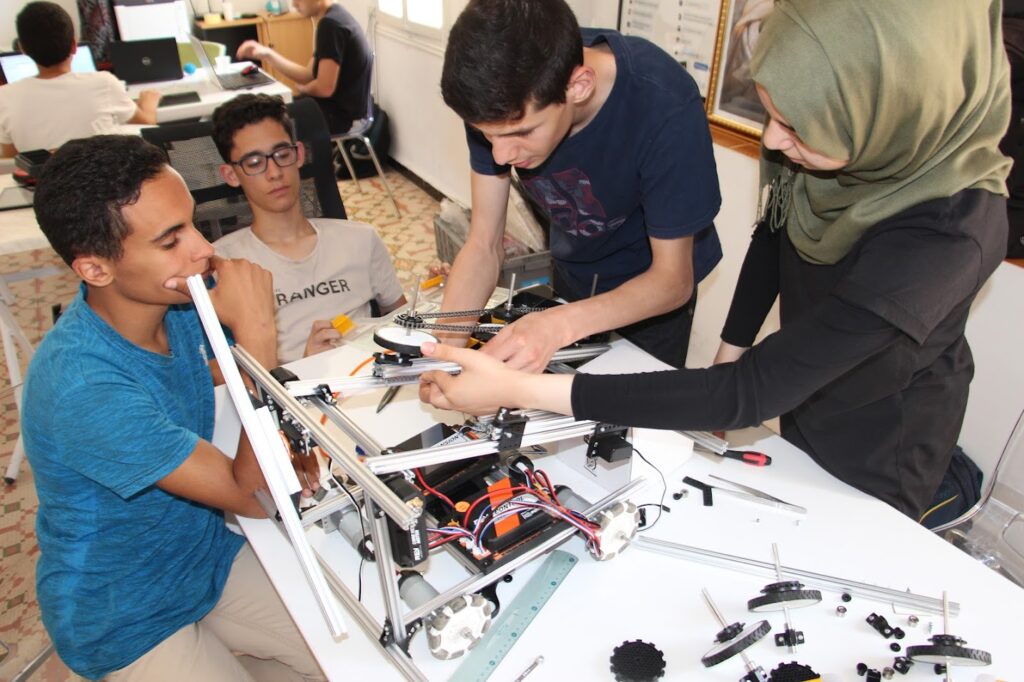
We then take it to the next steps of action planning. What are the goals, the objectives? What are the challenges and ways to overcome them? And what ways will they inform the community? Who are the stakeholders? They naturally find themselves thinking about what grows a sense of community and builds trust.
So, we have the students discover robotics, Arduino electronics, 3D printing, coding, and then programming, computer science unplugged, etc. Then they have the opportunity to build the project. It’s become the center’s model, especially in large STEM camps. And STEM by itself is not the only focus. Students are learning the English language, and they are using it while doing something they are passionate about in a project-based learning approach.
Despite them only being high schoolers, do you think these projects help prepare them for future careers?
Absolutely. Some of their projects are on the international level, about global warming for example. Another project was on the education system. A student built her own e-learning platform for training teachers who are lacking in skills they need to overcome job challenges. Many have reached the world stage through FIRST Global Challenge robotics Olympiad, and WE Are Innovators competitions.
The last collaboration project I saw come to life before moving to Saudi Arabia was about a village that had a risk of a volcano erupting. The STEM students put together all that they had learned in order to save the population from that village.
Some were working on the electronic side, creating a platform to detect magma and seismic activity. The robotics group built robots to extract humans from the area. They studied the volcano and how it erupts using the chemistry principles they learned. The coders also worked on code for the drones and the robots. They employed social-emotional learning, problem-solving, and resilience all in one large collaborative project with a cause.
What we’re doing is preparing those students for the jobs of the future that we still don’t know.
The skills they learned from the different workshops came together to save this population from a natural disaster. I’m sure when they saw what unfortunately happened in Syria and Turkey and recently in Morocco with the earthquakes, some would say in their brain, “How can we save that population? We have built something extraordinary back at the STEM camp! What would work here?” It’s rewarding to see our students grow to be strategic, autonomous thinkers and global citizens.
What we’re doing is preparing those students for the jobs of the future that we still don’t know. When I say that, it’s not just happening in Algeria or Saudi Arabia but at the global level, because the 21st century and education 4.0 skills — the drivers behind innovation — are the same for everyone, everywhere. World Learning has well understood the emerging demand for STEM-enriched learning and is integrating education 4.0 to help make students future-ready.
There is the challenge of students not knowing where their passion lies and what their careers might look like if they had not discovered some of these specialties. The center gives them access to explore. They learn to code, so they know the algorithmics and logical thinking. They learn the basics of electronics and Makeblock robotics, so that later, if they are interested in mechatronics, they’ve had the basics to go deeper. They try out the virtual reality and augmented reality components and are able to take on the game design challenge. Others take all that learning to the next level using artificial intelligence and create machine learning models to advance their projects.
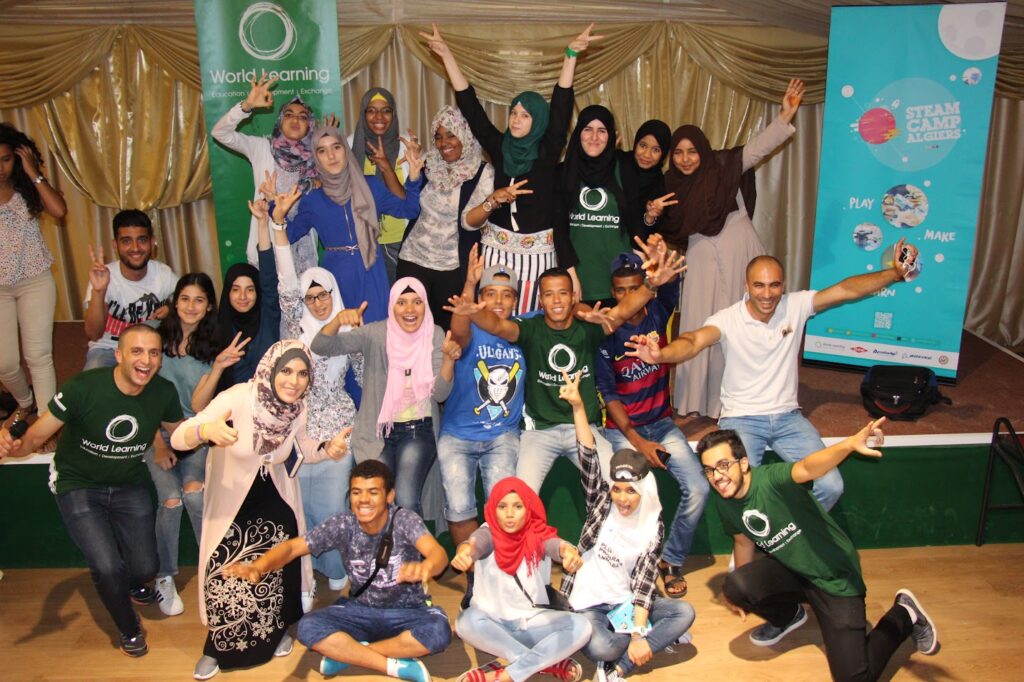
Through the center’s framework, they explore an array of captivating ‘specialties.’ Throughout this learning journey, in addition to the technical skills, students will have developed a comprehensive set of education 4.0 skills that help them navigate the uncertainties and anxieties of the future of work.
It’s all interdisciplinary and empowering. This will help them in refining their future study plans, in their future careers, and in their lives. Understanding the whole landscape of a problem and devising innovative solutions becomes a competency in their growing repertoire.
Is the plan to do similar programming in Saudi Arabia?
The growth of the portfolio in Algeria was the thinking behind the programming in Saudi Arabia. STEM learning and enthusiasm by itself is infectious! Immediately after our first STEM camp in 2016, school leaders who had witnessed the engagement of students wanted their staff to be involved in programming and their schools or associations to benefit from capacity building to implement STEM in their respective communities. The Algeria STEM corners initiative took root and continues to thrive. I am thinking about ways to bring that expertise into the Saudi Arabian office not only through the Boeing-funded STEAM Discovery Center, but also with new projects, funders, and education partners. It makes sense to expand here in Riyadh, and in all of Saudi Arabia, especially because the country itself is growing with Saudi Vision 2030 and the high demand for innovative education under the vision’s Human Capability Development Program.

